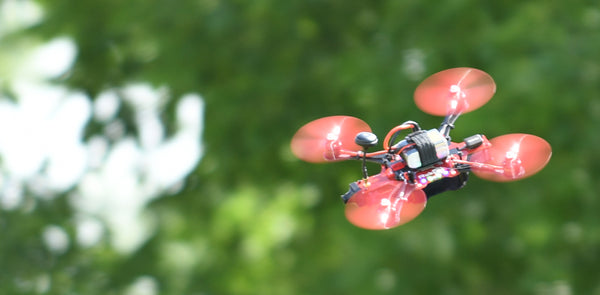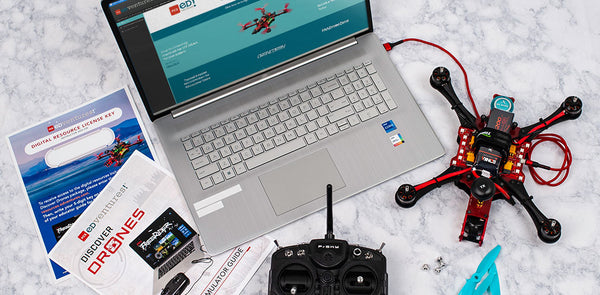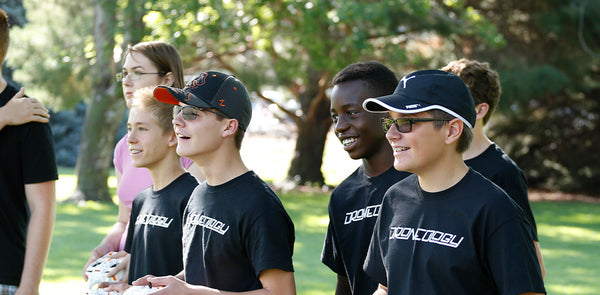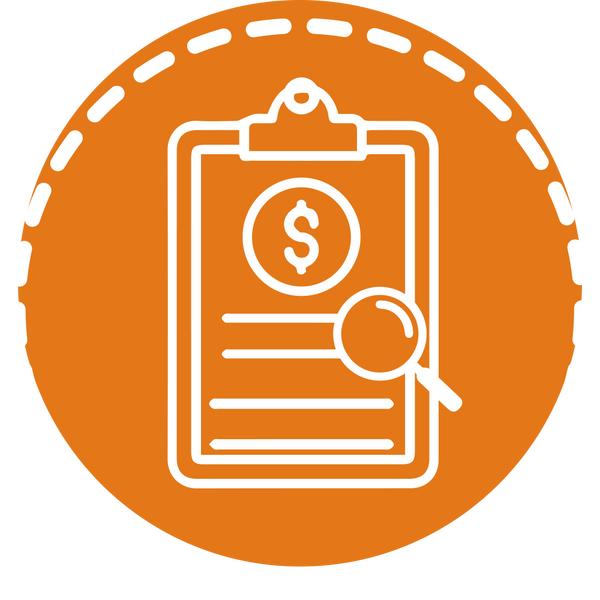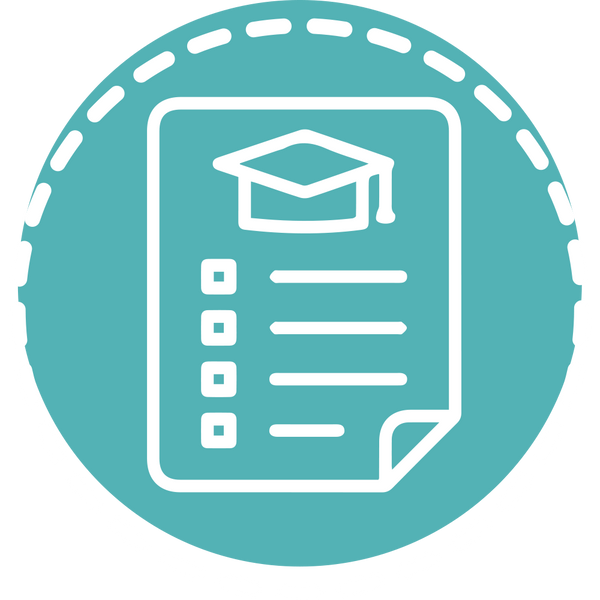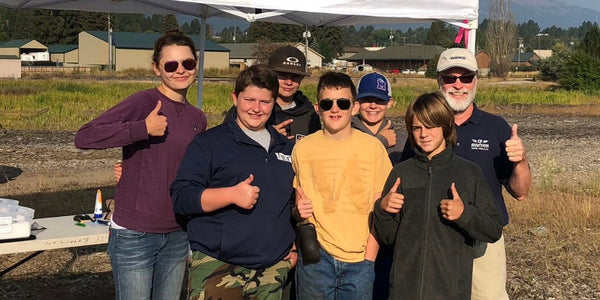
Taking Flight with Rich Stowell
Rich Stowell is an informal educator in McCall, Idaho. From a career in flight instruction to a drone camp for students, Rich has been helping others learn to fly for many years. We took some time to sit down with him to share his insights with you.
 In school, I always enjoyed the STEM subjects. When I graduated high school, I went to a four-year college and came out with a bachelor’s degree in mechanical engineering. I had always wanted to pursue flying, but priority one was to get the degree. My first job was designing heating, ventilation, and air conditioning systems for office buildings. After a couple of years, I decided it was time to learn to fly. Flying became my priority; I went wherever the flying was good and enjoyed competing in aerobatics. Eventually, I got to quit my day job and become a flight instructor. Flying eventually brought me to Idaho. I continued doing flight instruction but began pivoting toward outreach. I started getting involved with the STEM Action Center, the Idaho Space Grant Consortium and different schools.
In school, I always enjoyed the STEM subjects. When I graduated high school, I went to a four-year college and came out with a bachelor’s degree in mechanical engineering. I had always wanted to pursue flying, but priority one was to get the degree. My first job was designing heating, ventilation, and air conditioning systems for office buildings. After a couple of years, I decided it was time to learn to fly. Flying became my priority; I went wherever the flying was good and enjoyed competing in aerobatics. Eventually, I got to quit my day job and become a flight instructor. Flying eventually brought me to Idaho. I continued doing flight instruction but began pivoting toward outreach. I started getting involved with the STEM Action Center, the Idaho Space Grant Consortium and different schools.
I noticed that drones were becoming more and more popular as the STEM Action Center promoted various drone grants. After applying, I received one for the Ready, Set, Drone! package and another for Discover Drones’ RubiQ. I ended up combining resources from both of those kits to create the camp we ran in August.
Through this camp, I wanted to help students answer the question, “How does flying a drone relate to flying a helicopter or an airplane?” I also wanted to bring the structure of an airline or military aviation environment to let the students know why we were doing each component from the ground school to the simulator to flying drones indoors and outdoors.
In order to prepare, I went through the training that PCS Edventures and the STEM Action Center put on for Ready, Set, Drone! I also built in a day of training down at PCS headquarters for RubiQ. Plus I started to practice on my own. I learned to fly the small drones first, then the larger RubiQ drone. The trainers were all very good, and the environment was low-stress.
Before I could start the camp, I had to find students and community members to be a part of it. As an informal educator, I don’t have direct, daily access to the schools. Instead, I partnered with Valley County 4-H, a University of Idaho Extension. We also tapped into the Connecting Classrooms and Community Network. Using those resources, I sent a big email blast. Plus I gave a 45-minute presentation on “Drones in Valley County” as part of an airport event and took an ad out in the paper.
Throughout drone camp, we had incredible support from McCall airport; they let us use their classroom and maintenance hangar for two days. Then we transitioned to using a classroom at 4-H in Cascade and a field that was donated by Kelly’s Whitewater Park. It was really a collaborative effort. Because we weren’t working with one school, we actually had kids from both ends of the valley. The parents created an awesome carpool network so that no one had to drive the full distance. It was really nice to have parents involved like that.

We also collaborated with the McCall Fire and EMS. On the very first day of drone camp, we walked across the street and got a briefing from the firefighters. The first responders also provided opportunities for some hands-on activities; students got to put out a fire on a fire simulator and practice some basic first aid. One kid even had his head bandaged up as a test subject for how to bandage a head wound. That partnership was a lot of fun and set the tone for the rest of the week.

Using the Ready, Set, Drone! curriculum, the Discover Drones curriculum and what I was bringing from the aviation side, I created a modified curriculum to fit into five days. One of my hopes was to get the students flying every day. For the first two days, we spent the mornings doing classroom stuff and working through the Droneology course, then spent the afternoons flying the smaller drones indoors at a large maintenance hangar. Then it was time to transition to RubiQ.

When we got to the RubiQ, we did the whole build and followed the online configuration. We broke students into teams and gave each team a drone to build. They didn’t finish on the first day, so on the second day when they came in, we kept the teams the same, but we swapped the RubiQs. This made them figure out where to start since they had finished at different points. It tested their adaptability and made them check whether the other team had done everything correctly. We spent the next three mornings flying outdoors, then finishing the afternoons inside with simulator work or other lessons, building upon their flight experience.
The provided curriculum helped integrate elements of STEM into the class sessions. We talked about the LiPo batteries and how they are made up, studied the chemical reactions and power plants and propulsion. We talked about how GPS works with the RubiQ drone, plus radio communications with the control station, the transmitter and the drone. We were also able to go online and do the configuration part which gets into software programming and graphical representation. We finished up with lessons on forces, thrust, lift, drag, weight, Newton’s and Bernoulli’s principles and all the different aspects of aerodynamics. We also looked at why propellers are shaped the way they’re shaped and distinguished between the ones that went clockwise and counter-clockwise. Rolling those lessons in helped get students excited since they were able to go out flying and then explore how and why everything worked. They were primed and ready to listen.

When it was time to fly outside, we briefed the kids about the important considerations. I showed them how to register their drones and taught them about why it’s important, what it meant, and how long the registration was good for. Also, one of the pre-camp requirements for students who had smartphones was to download the AirMap app. I taught the kids how to look that up and make their own flight plans on it. Before we actually went out to the field, I would ask one of the kids to call up AirMap and give us a weather briefing. We looked at what our requirements were since we were in range of an airport that needed to be notified. We made this a morning routine, checking AirMap, weather, and temporary flight restrictions daily. That’s exactly what a pilot has to do, so it was good practice for them.

With the morning briefing completed, we would head outside. I built in different roles and responsibilities for the students called crew resource management. There wasn’t just the pilot manipulating the controls— we had a designated safety officer and a visual observer who wore different colored vests, so we knew on the flight line who was who. I think giving them each a different color and responsibility was beneficial. It kept them engaged, even when they weren’t actively manning the flight controls. Pilots are always using checklists — there are so many things in that complex system, and you don’t want to miss any critical items. I adapted the same thing with the drones. The spotter was also responsible for calling out preflight items, battery checks and area-clear checks. We also had emergency procedures in case of LiPo battery fires or runaway drones or loss of control. If a drone crashed, it was up to the other students to go out, retrieve the drone, rerun the preflight checks and reset the drone for the pilot. Having that teamwork aspect was very important. It’s a part of collaboration and adaptability. Everybody switched roles throughout the day, so in the end, everyone had the chance to do each job.
Since I’d gotten to identify common flying problems during my drone training with PCS, I was able to address them with the kids before we started flying. We talked about ground effect and “ceiling suck,” eliminating potential problems before they existed. When they got a little bit better, one of the things we tried was flying in formation. It wasn’t very successful, but it was a whole lot of fun! I kept trying to ratchet up the degree of difficulty. As soon as they started feeling confident, I would give them a new task.
We did some measuring in the form of a pre- and post-assessment. What we found was that as a result of drone camp, knowledge and experience with drones increased 46%. In terms of interest in career flying drones, there was an increase of 25%. A lot of the kids mentioned that they had no idea how many options were available to them in terms of careers with drones. Interest in STEM fields increased 15%.
Drone camp has also been a launch pad for future drone events. We’re using it to establish an aerospace club, introduce the drone packages in schools, and create a public showcase event where the students do judged flying challenges. What we want to avoid is a “Random Act of STEM” where there’s one cool event and no follow-up. We hope future programs will keep people engaged and educate the community.
We asked Rich to share his advice for other educators who want to bring drones to their students, and he had so many great things to say. Rich’s words of wisdom are below.
First of all, take the training and go through all of the materials. Teachers can spot lesson plans in anything, so put it all together, practice, and be confident. All you have to do is be just a little bit ahead of the students, so don’t be overwhelmed if you don’t know everything. Take it one piece at a time.
For me, it was helpful to start small. The kit that we had accommodates up to 10 students. However, we started up with just six really dedicated students. I think for our first time, that was the right size. One student had his own drone while others had never seen a drone before. I asked the kids with experience to help show us different maneuvers or help with the simulator software. Using them as a resource among their peers helped out and worked really well. I also had some intern help from 4-H so that there were always two adults on site. That allowed us to split into two groups, rotating between practice on the simulator and flying outdoors. Having the checklists was also very helpful. They left out a lot of the ambiguity and gave the kids who weren’t actively flying a specific thing they had to do. They weren’t just observing; they were constantly interacting with the drone pilot.
In the future, I would do more mixing of the classroom activity with the experiential activity. Breaking those up or integrating them throughout the day would help maintain engagement. I’d also do a little more mixing of the teams, shuffling them together to get different perspectives from new team members.
As I learned in training, one of the common fears for beginner pilots is getting the drone off the ground. People just hover in ground effect, staying in less stable air. When you start to fly, just go for it! Get it up in the air! Try to get familiar with the drones as an instructor. I wasn’t able to do flips or demonstrate anything for the students, so I had to rely on the kid who brought his own drone and showed us flips and things like that. I need to stretch my own experience with the drones so that I can demonstrate higher level flying without crashing.
Most of all, have fun with it! The kids will enjoy flying, but keep them focused on what they need to do. You’ll see a very nice progression. It was amazing to see in five days how the students in my drone camp progressed, especially the ones who had no previous drone experience. Even the ones with some experience felt much more confident by the end. As an educator, it’s great to see progress. It keeps us energized.
To learn more, take a look at Rich's website: https://www.richstowell.com/


